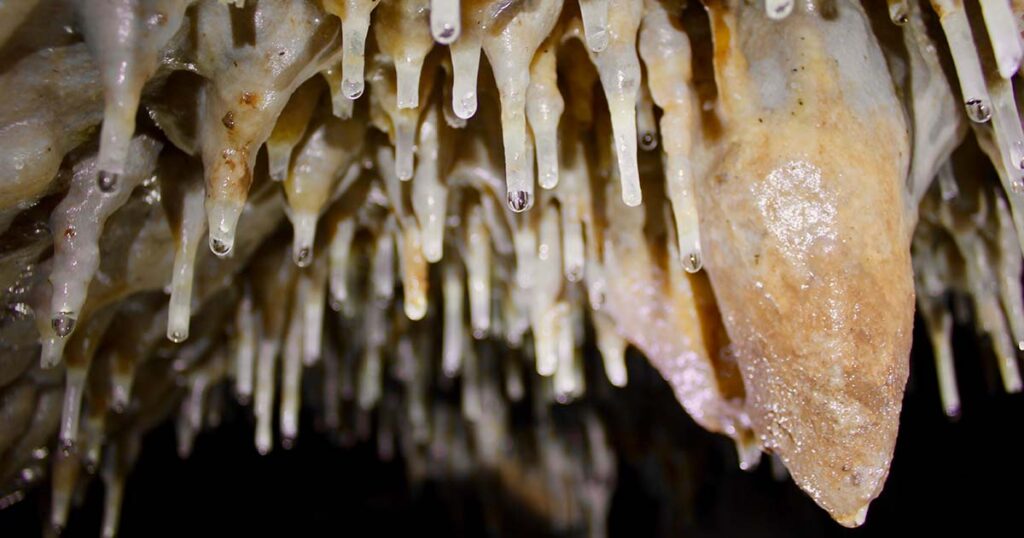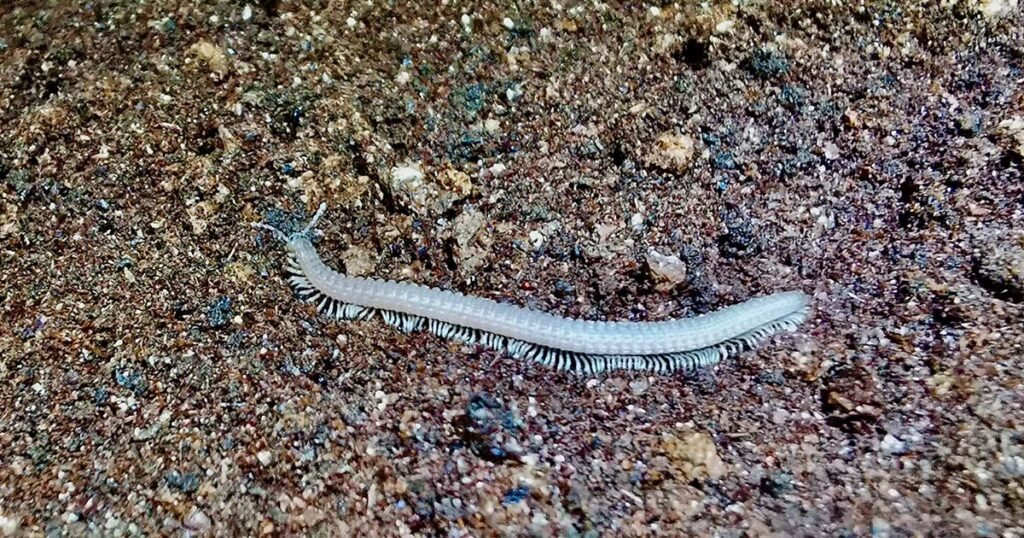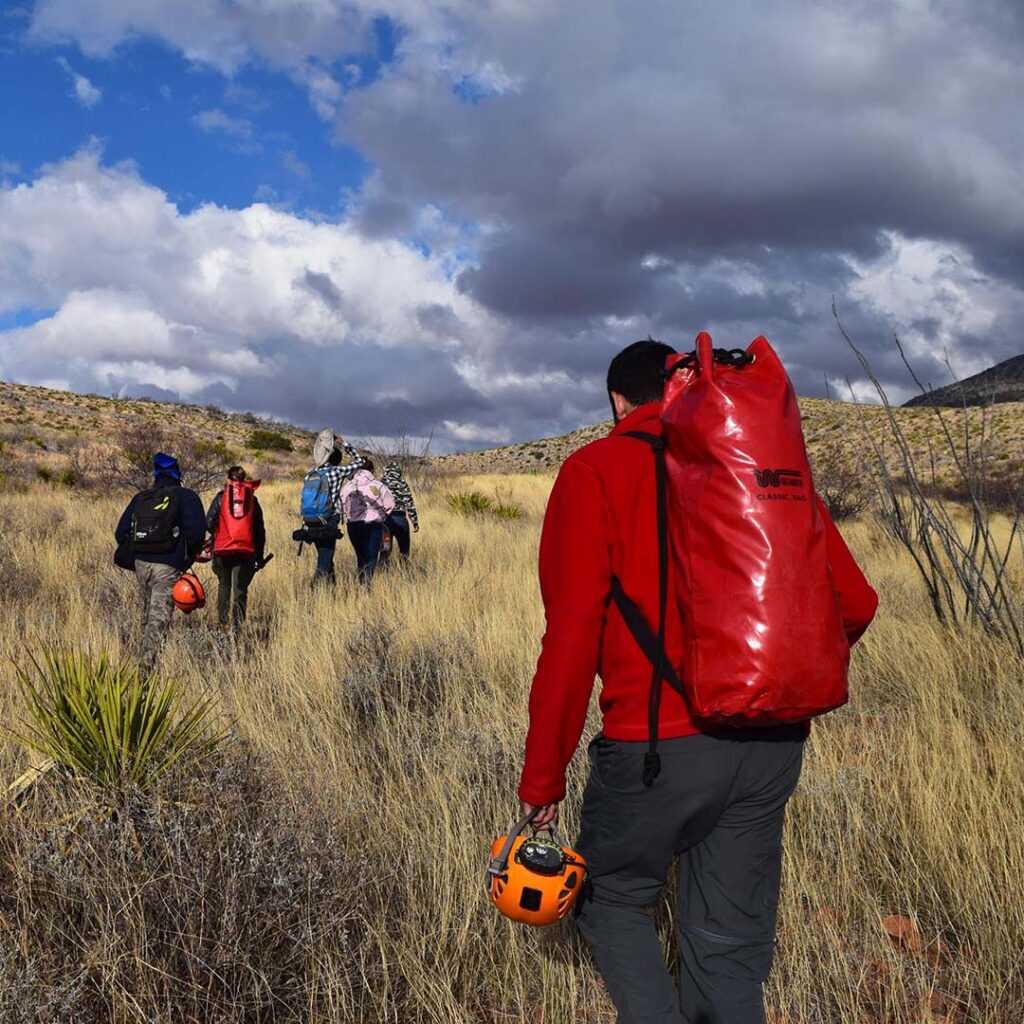In early 2017, the Grupo Pionero Espeleológico de Sonora, a caving group I co-founded, embarked on a trip to the northeast of Sonora to explore Cueva La Mora. Unlike other large expeditions we’ve participated in, this was the first exploration made up exclusively of members of this group.
It all began with the interest of the Gámez family, owners of the land where the cave is located, who contacted us in their quest to transform the cave into a tourist site, but with a more friendly, safe and environmental vision for both the cave and interested folks.
We began the exploration and immediately observed a vast landscape full of grasslands, interrupted only by the presence of the nearby Sierra San José, one of the region’s 55 Sky Islands and located a few kilometers from the border of the United States and Mexico.
The cave was difficult to locate. Only family members can find the entrance, and sometimes even they have a hard time. The entrance is above ground, a six-meter-deep pit, in which stairs have been installed for more efficient and safe access. On the edges of the pit there are several berry bushes, the reason for its name, and why it’s difficult to see with the naked eye.
La Mora is a cave approximately 250 meters long and 24 meters deep. Inside, we found three rooms with various speleothems, those structures formed by the deposition of minerals from water that are typical in tourist caves, if you’ve ever had the chance to visit one. We saw stalagmites, stalactites, and columns inside each of the rooms. However, only in the last room did we observe the active growth of these formations, a process whose final result we won’t see, of course, but which reminds us of the evolution of our Earth.

Although these formations can be found anywhere in the world, as long as they are from caves of karstic origin, for Sonora we have only found them in this cave, which makes it a true jewel for the state and with potential for research.
For this reason, in April 2024, we returned to explore this cave once again, but this time with the Center for Geosciences of the Universidad Nacional Autónoma de México. During this expedition, samples of stalagmites were collected that will allow researchers to understand climate changes in northwestern Mexico over the past 500,000 years, as well as the dynamics of the monsoon in this region.
How is this possible? Just as tree growth rings are used to determine age, precipitation, and temperature in the region. Stalagmites are used under the same principle. However, the advantage is that we can go back much further in time, learning about the paleoclimate from thousands and thousands of years ago.
This study will be the first scientific analysis of the cave. However, there’s still much to discover, for example, about the fauna that lives in or uses the cave. There is evidence of the presence of bats and a cave-dwelling millipede here, about which very little is known. La Mora remains an enigma, waiting to be unravelled by future explorers and scientists. This is just a taste of what a cave can contribute to science; it’s not for nothing that they’re known as natural laboratories.

The cave is in excellent hands, as the Gámez family, despite their initiative to turn the cave into a tourist attraction, has dedicated themselves to prioritizing its conservation and promoting scientific research. They have found a value beyond the economic — a genuine interest in sharing its knowledge.
If you are passionate about discovering life inside caves, we invite you to join the Grupo Pionero Espeleológico de Sonora. This fascinating underground habitat is full of mysteries to unravel, and we need all the help we can get to explore and preserve it. Join the adventure and contribute to the knowledge and protection of this incredible ecosystem!
Omar Calva is a communications intern for Sky Island Alliance. An expert caver from Sonora, he’s currently pursuing his PhD at Eötvös Loránd University in Hungary, focusing on the phylogeny and biogeography of one of the country’s cave-dwelling crustaceans.

